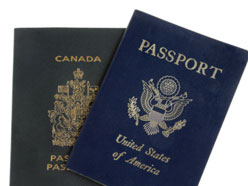
Have a client who wants to move his family to the U.S.? Consider an EB-5 investor visa, commonly referred to as the EB-5 green card. Unlike other investor and employment visas, which only allow a person to stay in the U.S. as long as the visa’s valid, the EB-5 allows the investor, along with his spouse and children under the age of 21, to become permanent residents of the U.S.
The EB-5 investor can apply for U.S. citizenship after five years of permanent residency. Getting it would mean qualifying for tax and estate planning benefits available only to U.S. citizens, and, more importantly, the right to leave and re-enter the U.S. at will.
The EB-5 visa was created in 1990 to stimulate job-creating foreign investment. So, each investor family has to create at least 10 jobs for Americans within two years. This requirement can be met through direct or indirect jobs, or a mix of the two, depending on the type of EB-5 investment project.
Indirect jobs are created collaterally to the EB-5 project. So, the jobs can be a result of the project, but there is no need for salaried employees to be on the project itself (e.g., jobs created by a coffee shop that opened as a result of an EB-5 project located in the same area would be indirect). There are two ways to qualify for an EB-5 visa:
- start a new business in the U.S.; or
- invest in a Regional Center project. (A Regional Center is an entity in the U.S. charged with organizing and managing EB-5 projects foreigners can invest in.)
Regional Centers encourage economic growth through increased export sales, improved regional productivity, job creation and increased domestic capital investment. A Regional Center can cover large areas, as well as areas as small as a city block.
The minimum investment to qualify for an EB-5 is US$1 million. However, when investing in a Regional Center located in a Targeted Employment Area (TEA), the minimum is US$500,000. A TEA is either in a rural area with a population of 20,000 or less, or an area where unemployment is not less than 150% of the national average. The job-creation requirement for the TEA option is stricter: all 10 jobs must be direct hires. Investing in a Regional Center project can be an ideal solution for Canadian investors who want to retire in the U.S., as they don’t need to be personally involved—Regional Center sponsors handle most of the project management. The relationship between investor and sponsors is detailed in these three documents:
- private placement memorandum;
- subscription agreements;
- operating agreements.
Another advantage of Regional Centers: because the investor has no involvement, he or she can reside anywhere in the U.S.
As with any investment, there is risk. One example is the timeline for meeting the job-creation requirement. Once the investment’s been approved by U.S. Citizenship and Immigration Services, the investor and his family will be granted a two-year conditional green card. To have that conditional status lifted, your client has to show he’s created enough jobs.
EB-5 application process
When investing through a Regional Center, the project must usually be pre-approved. Once that happens, the Regional Center will give your client’s immigration attorney documentation establishing the project’s bona fides.
To apply, the immigration attorney must file Form I-526, Petition for Alien Entrepreneur, along with supporting documents and the Regional Center’s business plan. When filing Form I-526, the client must show the investment amount (US$500,000 or $1 million, depending on the project) is irrevocably committed and held in escrow. For funds in escrow held outside the U.S. in a currency other than U.S. dollars, U.S. Citizenship and Immigration Services will review the currency exchange rate at the time the I-526 is adjudicated to determine if the requisite minimum investment amount is met in U.S. dollars. At the time of the lifting of the conditions on the green card, the exchange rate at the time of the actual money transfer will be re-examined to make sure the minimum qualifying investment was actually made. In addition to proving the funds are committed, the client must disclose the source to demonstrate they were lawfully obtained. The client must also demonstrate his net worth is US$800,000 or higher.
Once Form I-526 has been approved, the investor and his family can file Form I-485, Application to Register Permanent Residence or Adjust Status, if they’re already in the U.S. Or, they can file for an immigrant visa (green card) through Form DS-230 or DS-260 if they’re applying from outside the U.S., in which case the file is handled by a U.S. consulate in Canada.
If the I-526 is denied, funds held in escrow are released back to the client. Once the I-485 and DS-230 or DS-260 are approved, your client and his family can enter the U.S. as conditional permanent residents.
Within the 90 days leading up to the end of the two-year validity of the conditional green card, the client must apply to remove conditional status by filing Form I-829, Petition by Entrepreneur to Remove Conditions.
by David A. Altro and Antoine Brosseau Wery. David is a Florida attorney, Canadian legal advisor and the managing partner at Altro Levy. He can be reached at 416-477-8155 or daltro@altrolevy.com. Antoine is an associate at Altro Levy who specializes in cross-border tax and estate planning, as well as immigration law. He can be reached at 514-940-8061 or awery@altrolevy.com.